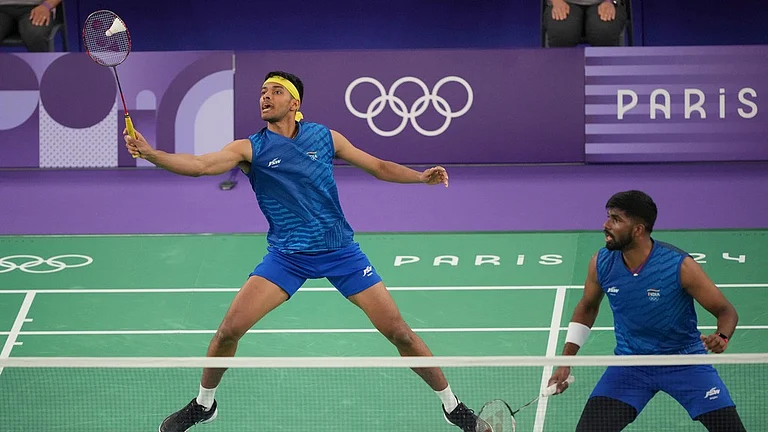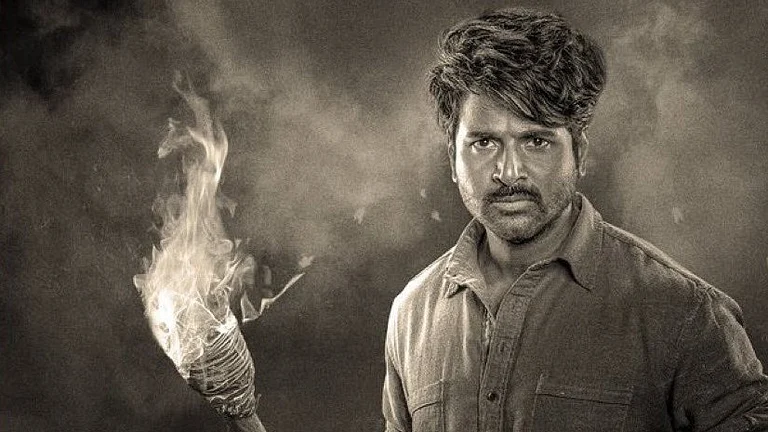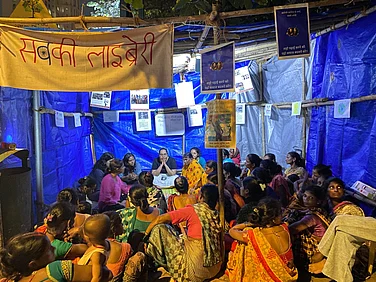Apu and Durga running through a field of kaash flowers to catch their first glimpse of a passing train; Durga getting deliciously drenched in the rain; the siblings trailing behind a sweet-seller, with a stray dog in tow, their reflection slightly wavering in the water of a pond; Indir Thakrun plopping dead in the woods, at a slight nudge from Durga; Sarbojaya breaking down with inconsolable grief, when Harihar shows her the sari he has brought as a gift for Durga, whom he doesn’t know is no more.
These are scenes etched in the memory of every Satyajit Ray lover, unforgettable if one has watched Pather Panchali even once. And if the Ray lover is a Bengali, then an inevitable sense of nostalgia will also be woven into it: a nostalgia born of usually childhood memories of watching the film (no matter which generation one belongs to, and in which medium one has seen it in—theatre, VCD, DVD, YouTube, streaming platform—in the nearly seven decades of the film’s existence), coupled with a vague sense of parochial pride in being a Bengali (not Indian, mind you).
I am unabashedly guilty of the first and have to confess that Anik Dutta’s Aparajito—about the making of Pather Panchali, a tribute to Ray in his centennial year—was steeped in nostalgia for me. I’m thus incapable of writing a detached review.
The film is a cross between a salute and a love song: the salute is that of a filmmaker to the innovativeness of a pioneer, something only a practitioner in the same art form is capable of doing; but the love song comes from a fan-boy, standing in for countless others, most of whom don’t share his knowledge of films/filmmaking but have an intuitive understanding of its emotional effect on them. To Dutta’s credit, he maintains the balance between both.
What neatly ties the narrative together, even as it moves back and forth in time, is the All India Radio interview of the director by Samik Bandyopadhyay, following the success of the film. It covers everything from Ray’s student days in Shantiniketan and his significant years at D.J. Keymer (including his London trip in 1950), to the euphoric beginnings of the Calcutta Film Society, the young Ray’s growing obsession with Bibhutibhushan’s classic after designing its cover and his decision to film it, and then the long winding road of finding funding for it (the most hilarious being the meeting with then West Bengal Chief Minister Bidhan Chandra Roy), followed by the totally unpredictable nature of its reception, post release, at home and abroad. All this, apart from the discussion of specific scenes.

This is where the film scores the most: in its faithful recreation of a string of iconic scenes, with all the drama that went on behind it. No character has been missed in this recreation; but to me, the scenes dealing with Ray’s interactions with Chunibala Devi (playing the doddering old Indir Thakrun) stand out. He has both respect and affection for this ancient actor, and her feisty spirit never fails to elicit humour either in her director or his audience.
There was another film in which scenes from Pather Panchali had played a pivotal role—Kaushik Ganguly’s Apur Panchali (2014), which traced the life of Subir Banerjee, the actor who had played the child Apu. There were striking parallels between his real life and that of Apu’s, as it unfolds in the trilogy; and Ganguly emphasises this point by juxtaposing several scenes from the trilogy at relevant points in his narrative.
Aparajito is, however, about a first, pioneering film and its iconic, debut director. It takes enormous courage to take this challenge—both as a director and an actor. But Anik Dutta and Jeetu Kamal pull it off. Well, almost. Kamal’s physical resemblance to Ray, in this film, has to be seen to be believed. And he portrays the director with studious faithfulness. However, his delivery in long monologues, of which there are many, has somewhat the ring of a lecture about them. Sayoni is lovely as Bijoya Ray, and I found Sarbojaya striking in the lone scene she had.
The only aspect of the film that really irked me was the re-naming of everything. I just didn’t understand why the original names of either the film (Pather Panchali is called Pather Padabali) or the renowned people associated with it couldn’t be used.

My experience of Aparajito—first day, first show, no less—was made especially memorable because of my delightful 10-year-old companion. She said she loved the film about the making of the film as much as the original (which she’d watched just a month ago); and the things that left a mark on her were: the director’s wife’s support throughout; the ‘gol-chhobi’ (round picture) that his son remarked about, seeing his father’s first sketch of the poster of the film (Apu being prepared for school by his mother and sister); and the director asking an assistant to reward the stray dog with biscuits for giving a good shot, saying he “deserves” it (‘Who is so kind to a stray dog’, she told me).
Pather Panchali will continue to charm children, I realised!

























